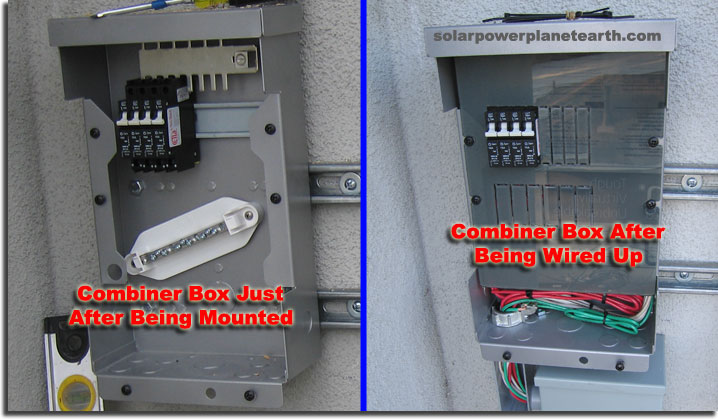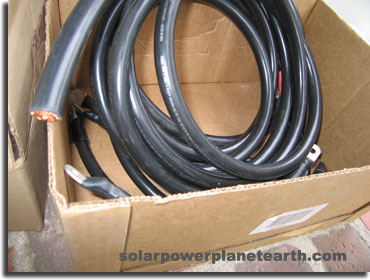 |
Photovoltaic System Hardware
In addition to your solar contractor installing solar panels, inverters, charge controllers, and batteries, that you may or may not need in your particular installation, there are some miscellaneous pieces of hardware that are also required.
Roof Mount
Since this is the most common type of residential/commercial installation method, it shall be discussed in detail. For most roof types, you want your photovoltaic panel mounts to be secured into the rafters to ensure structural integrity. During installation, proper roof flashing around the mount must be ensured to maintain the weather tight envelope of your roof. There are a variety of manufactures that have products designed specifically for this application. An example is shown below of a popular photovoltaic roof mount known as "Fast Jack."
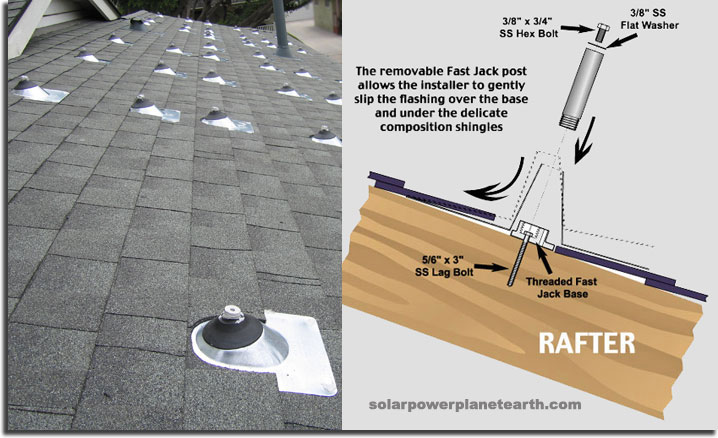
Unistrut Rails
The next piece of hardware typically used is an aluminum unistrut which bolts into the above mentioned "FastJack" type roof mounts. These rails are mainly used to structurally support the solar panels, however, they can also be used to mount junction boxes and run wiring as well. See the pictures below for clarification.
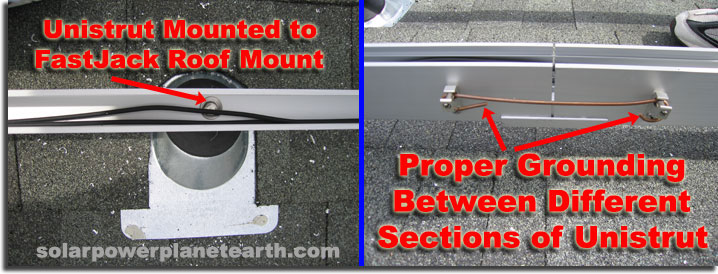
Panel Mounting Brackets
All that remains to mount your panels are small mounting brackets that "pinch" your panels down on to the unistrut rails. Although for the most part these brackets are fairly universal, there are a few variations, some solar panel brands require slightly different mounting brackets, so care must be taken to order the right ones. Within these variations there are two standard pieces, specifically single sided brackets, and dual sided brackets, each with a a unique purpose. The picture below shows the two types.
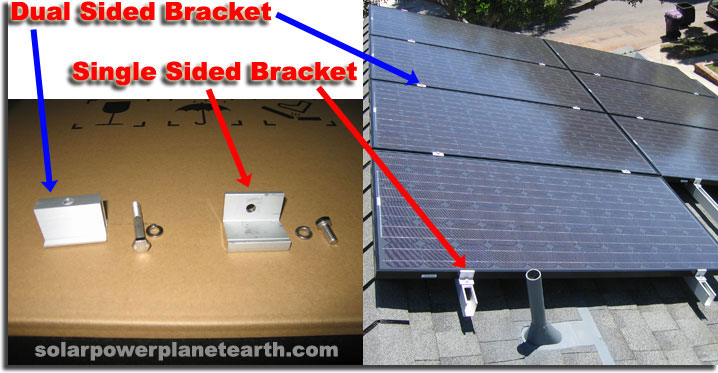
Combiner Boxes
Combiner boxes are used to bring multiple series strings together into single line. The strings are typically combined in parallel. Combiner boxes are typically located close to the photovoltaic array, which allows only one wire pair to make the "home run" back to the inverter, saving costs in both materials and labor. To better understand series and parallel wiring, see our electricity 101 tutorial.
